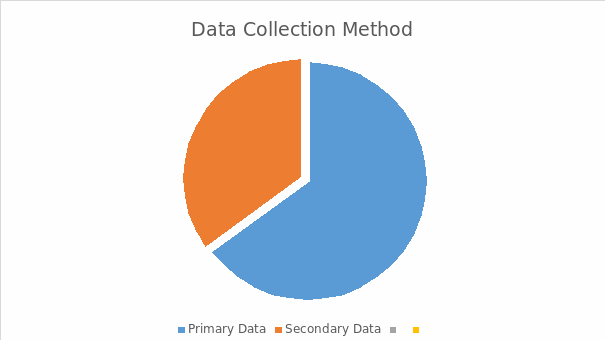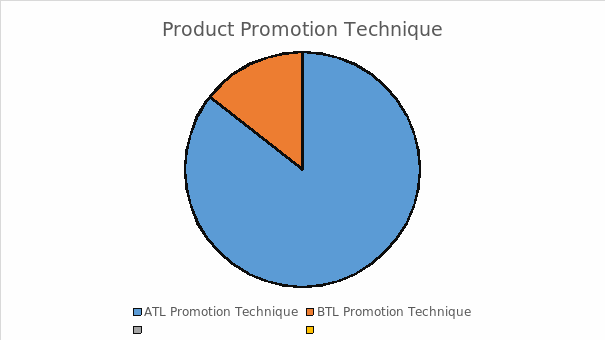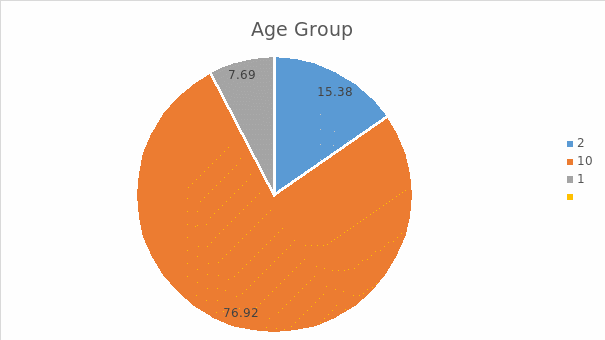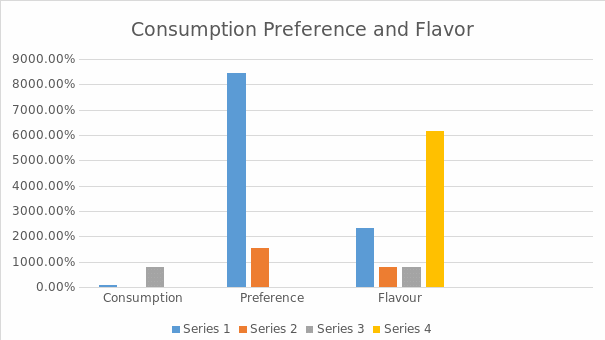Research Overview
Sound judgments and intuition are unquestionably vital in all businesses across the globe. However, more than knowing consumers’ wants and preferences demands proper market research. Equally, reliable and objective data reduces risk and increases the chances of success in business endeavors. Data collected in the market provides business information for sound decisions. Consequently, market research aids in developing a business strategy, introducing new items or services, fine-tuning current products, and services, expanding into new markets, developing an advertising campaign, setting prices, and selecting a firm.
Two market research methods are used to collect data: primary and secondary. The following is a market analysis research that Tudor Company employed to examine its operation’s economic climate and industry and the attitude of its potential customers. It is a breakdown of research methods and product promotion techniques. Equally, the research utilizes qualitative and quantitative data collection methods to analyze the flavor that best meets the thirteen respondents’ tastes in Tudor Potato Chips Company.
Data Collection Methods
Primary Research Method
Primary research is first-hand research performed on an individual’s own or someone else. It entails asking questions and gathering information directly from a source, generally consumers and potential customers within the target market (Lahtinen et al., 2020). This type of research ensures that the material collected is current and relevant, allowing correct patterns to be shown. Primary research also gives the individual or organization authority over the data (Wan, 2022). However, preliminary research may be costly and time-consuming if it entails face-to-face client interactions. In order to achieve the most remarkable outcomes, prior knowledge of the subject and market research abilities are required.
Questionnaire Plan
The primary research method was utilized in the research through administering questionnaires to random crisp consumers, and the following is the questionnaire plan utilized in addressing seven questions.
Which age group do you fall into?
- 0-17
- 18-23
- 21-23
How many bags of chips do you consume on average every week?
- 0-2
- 3-5
- More than 5
Would you prefer chips that are
- Lightly seasoned
- Heavily seasoned
Choose a statement that best suits your view of business size.
- I support small businesses occasionally.
- I rarely consider the size of the business while shopping.
- I must support small businesses.
- This is not something to consider while shopping.
If given a chance, which flavored chips would you make?
- Wasabi and Beef
- Bolognese and Parmesan
- Indian Tandoori
- Mexican Chili
Which size would you choose for your new flavor?
- 50 Grams
- 150 Grams
- 250 Grams
- Family Pack
Choose a statement that best describes your taste.
- I like trying new flavors.
- I prefer to try something other than new flavors.
Secondary Research Method
Similarly, Secondary research has historically been assembled, collected, structured, and published by someone else. Reports and studies from government agencies, trade organizations, and other firms in the industry are included under this category (Lahtinen et al., 2020). Essentially, secondary data analysis is used by researchers to address new study questions or to evaluate an alternate viewpoint on a prior study’s original issue (Wan, 2022). Significantly, this research answers some research questions and places specific theories to the test. Equally, it creates a suitable study design, unlike data from field research, which must be evaluated since it can give insight into broad market patterns or product categories. However, the investigator may need help locating material relevant to the needs (Cruz et al. 2020)..Furthermore, current study data may need more currency to be relevant. Without significance, secondary research seldom delivers all of the answers. Lastly, lack of precision and depending on secondary sources may need to be more accurate and accurate.

Product Promotion Techniques
The product promotion methods utilized were above the line and bellow the line methods. The following section addresses the merits and the demerits of employing the two methods in product promotion.
Above-the-line method of product promotion
This method provides a broader reach for potential customers for the potato chips nationally and beyond. It provides improved audience connection through Audio-visuals and other media institutions. Equally, the method facilitates brand development for Tudor Company Ltd. Media advertisements are a significant device for defining and establishing brand identity (Lahtinen et al., 2020).Essentially, Above the Line method offers the best promotion of sales techniques for the potato company, a goal accomplished by extensive and inventive communication with potential customers about the brand and its benefits to reach as many people as possible (Wan, 2020). However, prime time slots are expensive, making it harder to recoup the investment of the potato chips. Typically, there is a minimal possibility for sophisticated targeting of potential consumers; specific television stations can be chosen depending on the audience, most customers are youths who pay little to no attention to television and radio programs.
Below-the-line method of product promotion
Lower expenses are undoubtedly the most significant benefit of below-the-line advertising. Generally, direct mailing and marketing through search engines are significantly affordable by Tudor Company. Furthermore, below-the-line solutions may be scaled up or down more cheaply (Cruz et al. 2020). Equally, marketing gives more opportunities to strengthen the customer-brand relationship between the potato company and the customers. It enables a more personal, direct, one-on-one interaction (Wan, 2022). It is easy to track and offers a high return on investment for Tudor Ltd and simpler to keep track of the budget. Evidently, if mailing lists are maintained, they might become updated (Alvarez & Casielles, 2018). However, this method proved unworthy for promotion of the potato chips. Return rates are relatively low because massive national campaigns are costly, therefore the turnover for the company is lowered significantly.

Findings
The following research findings were discovered through primary research method at the end of the research carried out by Tudor Potato Chips Company by 13 respondents. Averagely, the majority of the respondents fall between 18-20 years, with the eldest being 23 years, with most of them consuming up to 2 bags of potato chips weekly and a few consuming five bags and above.


The responses indicated that 84.62% preferred lightly seasoned chips and the rest opted for heavily seasoned potato chips. Seven respondents had no view of the business size to shop in, 4 preferred specific sizes, 2 supported small businesses, and none had a crucial taste towards supporting the small businesses. Given a choice, 61.34% claimed they would make Mexican Chili flavored chips, 23.08% preferred Wasabi and Beef, while each of the remaining preferred either Indian Tandoori or Bolognese and Parmesan-flavoured chips. Consequently, the size of the new flavor mattered to the respondents; 7 preferred 150 grams, 5 preferred 50 grams, and only one preferred a family pack. Additionally, ten respondents liked trying new flavors, and three seldom preferred new flavors.
Recommendations
Increasing demand sales throughout the product life cycle and providing information about the product for new products or after modifications enables customers to comprehend the product and desire it. The choice of a product promotion technique is crucial when numerous companies compete in the same marketplace and for differentiation of the product, among others.
The following recommendations are suggestions to Tudor Company LTD for customer retention and a positive competitive advantage.
The Company should utilize the line method to promote its sales to reach a larger market and establish better consumer connections. Reaching more customers will better the returns of the Company and thus the profits. Significantly, the Company should make lightly seasoned potato chips because consumers prefer them most. Additionally, making new flavors like the Mexican chili potato chips would be a better option to entice more customers to buy chips in the Company, packed in packs of 150 grams. Technology and competition primarily affect companies’ choice of market research and promotion. Because of artificial intelligence’s growth, significant research has been devoted to enhancing success. Artificial Intelligence streamlines processes and creates additional features like customization, customer experience assessment, evaluation of the texts and terms most connected with the brand, and extensive data collection and management. Robotic technology and computer intelligence are undeniably at the pinnacle of the line of critical aspects that cannot be underestimated in market research.
Notably, the extent of competition is another critical component in any market study. It is critical to research the competitors and see how they are faring. Companies should investigate the organizations that provide products or services comparable to those they wish to provide and the outcomes they achieve. The companies must discover what clients like about their competitors and what can be improved. Assessing whether any fields within the competition are not being covered is a fantastic potential for Tudor organization to capitalize on.
References
Alvarez, B. A., & Casielles, R. V. (2018). Consumer evaluations of sales promotion: the effect on brand choice. European journal of marketing. Web.
Cruz, T. B., Wright, L. T., & Crawford, G. (2020). The menthol marketing mix: targeted promotions for focus communities in the United States. Nicotine & Tobacco Research, 12(suppl_2), S147-S153. Web.
Lahtinen, V., Dietrich, T. and Rundle-Thiele, S., (2020). Long live the marketing mix. Testing the effectiveness of the commercial marketing mix in a social marketing context. Journal of Social Marketing. Web.
Wan, M., (2022). Research methods. In CSR Image Discursive Construction of Banks and the Effects on Capital Markets (pp. 69-86). Springer, Singapore. Web.